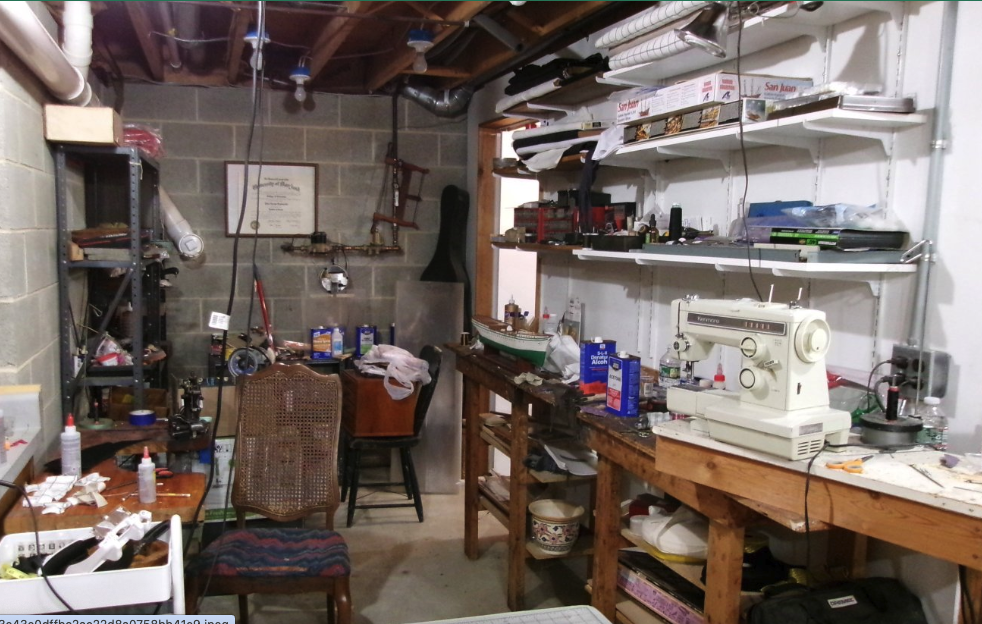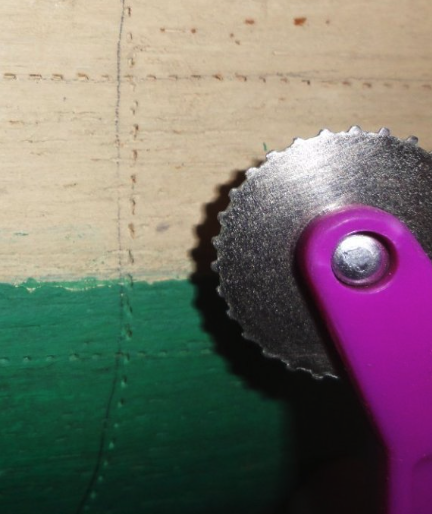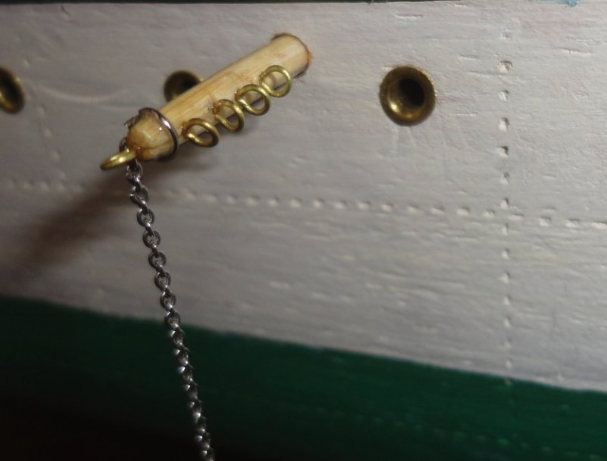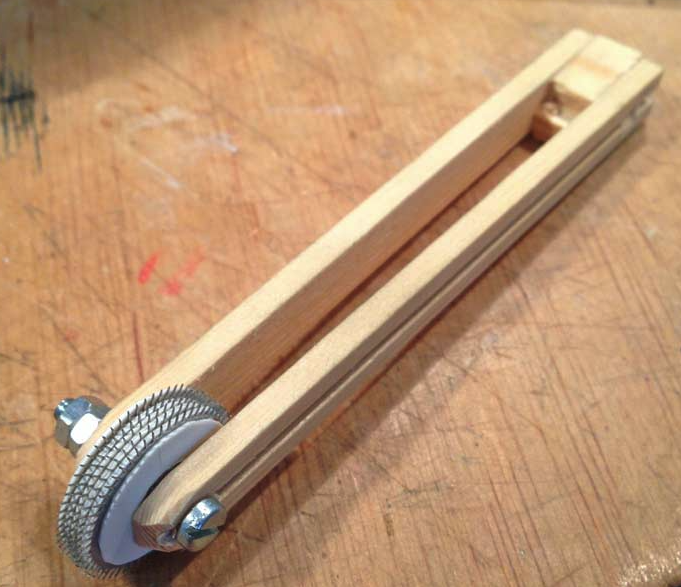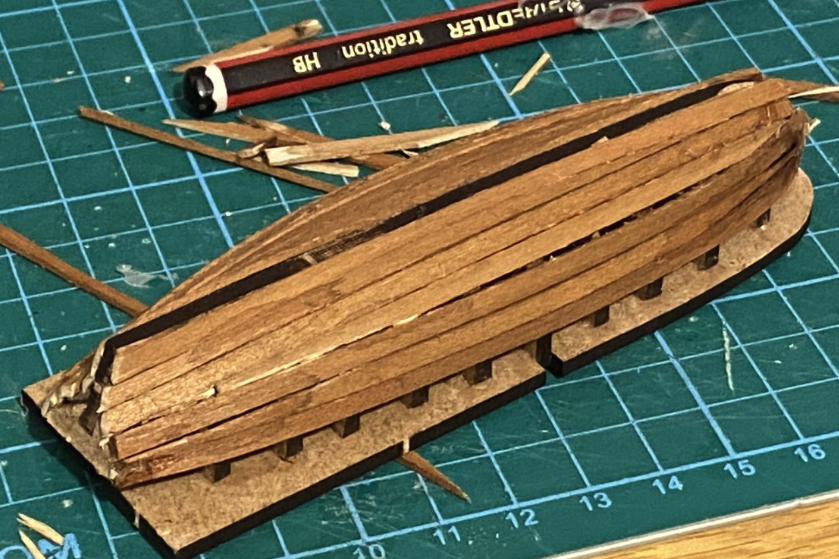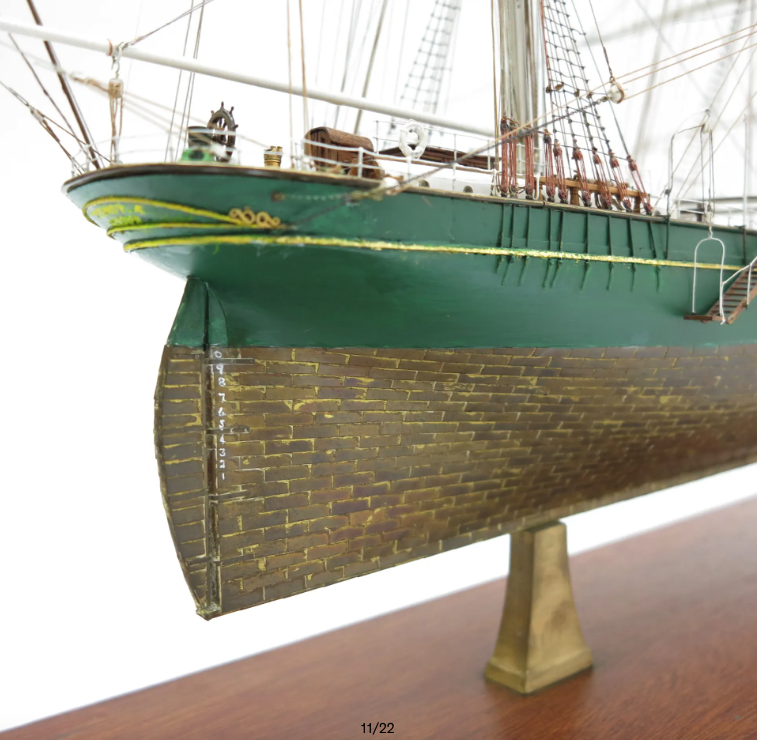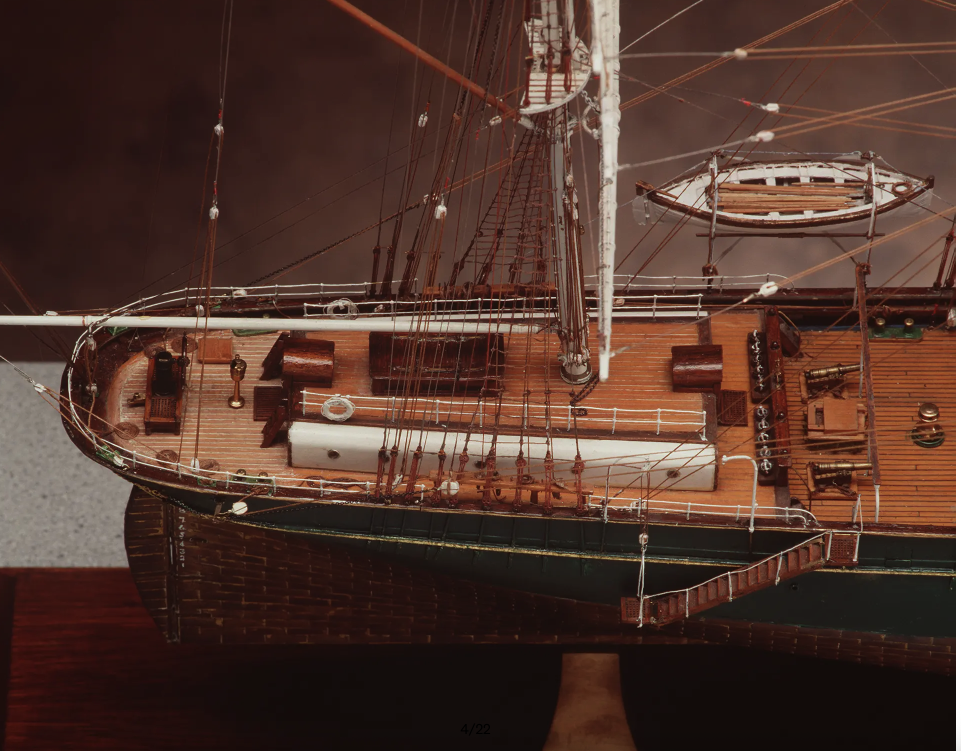-
Posts
1,489 -
Joined
-
Last visited
Content Type
Profiles
Forums
Gallery
Events
Everything posted by Snug Harbor Johnny
-
It is most interesting to see the use of balsa to fill and stiffen the framing of a card model ... the very thing I want to do (eventually) on the USS Baltimore (CA-3 1890) 1:200 from Heinkel models. There is a complete build on MSW with many tips and innovations that can help any builder of a steel warship: https://modelshipworld.com/topic/37247-uss-baltimore-ca-3-1890-by-jsk-finished-heinkel-models-scale-1200-card/#comment-1066761 As for availability, they sold me an economical download version for less than $20 paid by credit card, and I was able to print it out with no difficulties. As for color and size, I imported a renamed duplicate of each file into Photoshop (not that I'm used to that very complicated - and powerful - program) and was able to do simple enhancements to the color balance and contrast by tweaking the sliders for those by clicking: Image - Adjustments - Color balance (or Brightness/contrast), then I saved as a jpeg file. Buying a download from the designer gets around all the shipping and tariff expenses (besides costing less than a physical kit). Of course, one must obtain the needed thickness of card (art board) stock to glue the paper (you print out) to, then the cut pieces out yourself. A good art store will have various thickness of paper products, and I went to Blicks for mine (now stored flat under our bed ... with the Admiral, out of sight is out of mind). Parts of the hull (fore-and-aft) are in two pieces meant to be printed on 8 1/2 x 11" standard paper (higher 'pound' weight stock is better) to make about an 18" model. But by dividing the images in Photoshop (by sizing duplicates) and printing the "halves" (with overlap so no individual part is cut) at the largest scale that would fit the length of 8 1/2 x 14" paper, I was able to get pieces that will make a 24" model (about 1:150 scale) that will be easier for me to fiddle with. I imagined that using balsa to fill the large voids in the paper framing would: 1.) stiffen the hull and make it easier to work with, attach structures to, and even pin into the substrate enclosed by the paper applied to the frame; 2.) give the model a little 'heft' so it isn't featherweight and will be more robust; and 3.) provide great lines of the hull, once sealed, that the paper can be glued to - and will more evenly conform to (perhaps with slight moistening by a water based glue. This means less creasing or kinking of flat paper trying to assume 3 dimensions. The builder of Baltimore didn't like how the recurved area in the upper stern came out, and if there was a solid substrate, the paper could have been molded enough to look a lot better. So as Chris advised, getting a smooth surface with filler will prevent those divots and irregularities from 'telegraphing' through the applied paper. 'Love your progress thus far, and I'll be following your progress as you go along. Savor each phase of the build and take whatever time is needed to go from step to step. Clear sailing ! Johnny
-
Indeed, A.I. can get it wrong. I asked what the draft of a C&O canal boat was, and the A.I. 'summary' said 6 feet. I knew this had to be wrong, because I recently visited the Monacay river aqueduct on the C&O and measured the trough depth (from half a foot beneath the top of the capstones) of 5' to the material added to the bottom during the maintenance done in 2005 - which added half a foot to the original base. Thus the range of water depth in the aqueduct available (though deeper in the earthen sections) when the canal was in use was 5 to 5 1/2 feet. So I did my own search to find the original specifications in use between 1873 and 1924 (the year of closure) and found that the largest boat was limited in loaded draft to between 4' 3" and 4' 9" - consistent with my measurements of the stone passage. A.I. was likely stating the distance from keel to gunwale (6'), because the specifications for minimum draft was 6" to 11". The barges were merely wooden boxes with slightly rounded ends, so an empty barge rode high in the water, and was known as a 'lighter'. Due to some low bridges, the overall height also had to be limited. Still, you can get many good leads from A.I. - but you still have to use human intelligence plus logic to 'filter' out bad info. It also depends HOW you ask a question in a search, so multiple queries put in different ways can lead to useful results.
-

Looking for ideas for work area
Snug Harbor Johnny replied to Desertanimal's topic in Modeling tools and Workshop Equipment
You can consider adjustable shelving as seen in a tight end of my workshop. Found at most 'big box' home stores, the vertical rails attach to a wall (preferable screwed where there is an underlying stud), then metal arms (several lengths are available) clip into the verticals at the levels you choose (and they can be easily changed) - then the shelving made for the arm length chosen simply lies on top of the arms (don't space the verticals too far apart). You can put stash kits, supplies or whatever on the shelves ... and this idea can be used for finished models in any room, where acrylic sheeting is hung from the shelf above (drill holes along the top of the acrylic to fit over hooks screwed into the edge of the upper shelf) and the bottom of the clear sheet rests against the lower shelf. That, plus small sheets on any free shelf end, will keep out most of the dust - yet permits easy access to the model. Below my shelves is a home-made tall bench (plywood top and 2x4 legs & under frame) where I can work standing. Many find sitting for too long can cause back strain, so at least half the work I do is standing - also efficient in a tight space. -
'Affordable' kits often have many compromises ... and even outright shortcomings. That's where doing research and buying better aftermarket fittings, buying or making scale rope, etc. will upgrade a model - but at a cost. But like painter Bob Ross said, "Its your world ... you can do anything you want."
-

Innocraftsman Mill
Snug Harbor Johnny replied to kgstakes's topic in Modeling tools and Workshop Equipment
I used a very old bench-top drill press equipped with a cross vise for a long time ... setting a depth was imprecise, but I'd use the 'creep up on it' method, then lock the depth stop tight. The cross vise was crude as well, but good enough for my purposes. When the drill press became unserviceable, it was replaced with one from Harbor Freight and put the cross vise on it ... again, not a precision setup but serviceable. -

HMS VICTORY (HELLER) NEWBIE HERE
Snug Harbor Johnny replied to KIMG's topic in New member Introductions
The 'original' color was exposed to a lot of sunlight, then sealed by successive pain coats, so depending on the constituents of the oldest paint - subtle (or not so subtle) shade changes may well have occurred. If cheaper yellow elements (like turmeric, but there are others) had been added to the mix for economy - after all the Victory had a lot of square footage to cover - that might explain what has been described as a 'pinkish' color. Conjecture, of course, but another reason might be that there was a priming layer laid on first that had a little red ochre in the mix - followed by a top coat of a 'yellower' paint. A Google summary is: The true color of the yellow/ochre stripe on early 19th-century British warships, especially around the Napoleonic era (like the famous "Nelson Chequer"), was a pale, natural yellow made from yellow ochre pigment, often mixed with white for a lighter, buttery or even lemon-yellow hue, sometimes described as "baby puke yellow," rather than a dark, brownish ochre, with modern analysis of ships like HMS Victory confirming it was a lighter shade, even a hint of salmon pink in earlier layers, though the iconic look was a distinct, pale yellow-buff. Key Details: Ingredients: The paint used natural ochre (a clay pigment), lead white, chalk, and linseed oil, with variations depending on availability and desired shade. Nelson's Preference: Lord Nelson favored a pale yellow, even requesting brighter mixes with white, but the Admiralty often stuck to standard ochre, though his preference for the yellow/black checkered look became famous after Trafalgar. Variations: The color wasn't uniform; some ships used darker ochres, while others might have had red ochre during the Seven Years' War, but the classic Napoleonic look was that pale yellow-buff. Modern Interpretations: Research on HMS Victory suggests earlier layers were pinkish, but the iconic yellow stripe was a pale, light yellow, distinct from deep, brownish ochres. Then again, ships of all sorts were often modified in their career (sometimes drastically), so it depends on which point in time the modeler wants to represent - just do the research, and as Daniel Boone said, "Go ahead." I know I've been 'stuck in the weeds' on one or more projects for years - just trying to decide the place and time to be represented, then researching how to justify a particular impression. Johnny -
You're steaming ahead at 20 knots, mate ! Hmmmm, ... Scotty, can you give us any more ?! ... Captain, I'm giv'in' her all I've got !
- 73 replies
-
- Steam Cutter
- Harriet Lane
-
(and 2 more)
Tagged with:
-
I forgot to mention that I've cut a dolphin striker (and a few other fittings) from sheet brass of appropriate thickness using a jeweler's coping saw. At first it looks a little rough, but I cut a little away from the scribe line so it can be cleaned up with miniature files. It sure beats the plastic striker in the Revell kit.
- 101 replies
-
- Cutty Sark
- Sergal
-
(and 1 more)
Tagged with:
-
Per your previous post, I've had to do 'shop vac diving' a few times ... and most of the time could retrieve an item accidentally sucked into the vac - except for a couple of tiny items. I've also learned, before sweeping or vacuuming the floor, to get down on hand and knees with a flashlight to provide low-angle light to search for any little thing that may have dropped down since the last sweeping. I also have used paper printouts for scrollwork decorations. Screenshots of such details from an old photo can be adjusted in Photoshop for detail and sizing, printed out, then carefully cut out. (Thanks for the tip of cautiously using CA to strengthen the paper.) After application on a model, a compatible sealer coat will protect the applied decoration.
- 101 replies
-
- Cutty Sark
- Sergal
-
(and 1 more)
Tagged with:
-
Don't forget a time-tested alternative ... Linen. Now decent scale rope of linen is hard to come by (old time modelers use "Old Cuttyhunk" fly fishing line - out of production since the 1940s), but I suppose one could make their own with a Syren Rope Rocket or alternative rig ... yet fine linen thread has relatively limited availability and is expense, at that. Fine linen fabric ('lawn') is also hard to find, but the 70+ year old sails on a restoration I've worked on are still in good enough shape to re-use. Linen can last for many hundreds of years (e.g. Shroud of Turin) and there are samples of 2,000 year old Egyptian linen cloth.
-
Ahh the Tennessee build ... THATS where I remember the 'sewing' method for ratlines from. There are so many helpful tips and techniques on MSW, I should have started a notebook to record the log and post each good idea came from ... too late now, but I remember many of them.
A beginner may have to go through a number of build logs to absorb these techniques, which is daunting to some, but I thought it part of MSW's allure.
-
The divots on the copper bottom look great. As for the proposed clove hitches, at 1:144 scale, an easier way would be to 'sew' each ratline through the shrouds (with a paper guide in the back to keep the line straight) with a fine needle. Then tie just the end points with a cow hitch. The trimmed end of the line (after a tiny bit of glue to secure the hitch) will face inward - which looks better than the little 'tails' sticking outward from the end shrouds that one often sees on models.
- 73 replies
-
- Steam Cutter
- Harriet Lane
-
(and 2 more)
Tagged with:
-
I rolled divots with a modified (hand filed) pattern wheel to represent steel hull plates on a project (over existing paint), and they looked OK after a re-painting. Someone on MSW recently used wheels from a dermal roller to make tiny divots in a copper bottomed model. I suspect that a combination of light ruled horizontal scribe lines (with vertical divisions), followed by the dermal roller done over the base coat, would 'telegraph' through the final coat enough to resemble laboriously applied copper plates ... with random tacks in the the plates themselves.
- 73 replies
-
- Steam Cutter
- Harriet Lane
-
(and 2 more)
Tagged with:
-
I suppose it depends on which wall location one is looking at, and also the height of the interior space. E.g., a cabin wall that is the hull of the ship would logically be planked horizontally due to the many hull frames and curvature. A simple interior partition with a fore-and-aft orientation might comprise a 'header' nailed to the overhead beams and one on the deck, with vertical planking between them. But if framing is done (similar to a wall in a home), then horizontal 'ship lap' would be most common.
-
When you can can get a good buy on an older kit, that's one way to beat inflation. I queried for the scale of all Model Shipways versions of the Harriet Lane and wondered which one you got. A search result is pasted below: Model Shipways has offered the Harriet Lane in multiple scales, but the current main kit is 1:96 scale, a larger plank-on-bulkhead version, while older solid hull kits were available in 1:120, 1:128, and 1:144 scales. Key Scales & Kits: 1:96 (Current): A plank-on-bulkhead kit with laser-cut parts and detailed fittings, designed by David Antscherl and available from Model Shipways. 1:128 (Older): A solid hull kit with machine-carved hull, often found on resale sites. 1:144 (Older): Another solid hull version mentioned in forums. 1:120 (Very Old): An even earlier version of the solid hull kit. When buying, always check the product description for the specific scale, as Model Shipways offers versions from different eras.
- 73 replies
-
- Steam Cutter
- Harriet Lane
-
(and 2 more)
Tagged with:
-
We'll look forward to seeing those projects, mate !
-
The journey of a hundred miles begins with a single step. Fair sailing, mate!
-

Good 'Hobby Quality' Metal Lathes
Snug Harbor Johnny replied to tmj's topic in Modeling tools and Workshop Equipment
Per the above posts (I have the Unimat SL - compact but adequate for what I've done) - the back pulley on the Unimat 3 should be flipped so the largest wheel is on the outside. That way, the small wheel on the output pulley will line up with the large back wheel for a better speed reduction that is further reduced by a second belt going from the inner small wheel of the back pulley set to the larger pulley on the spindle pulley set. The motor does make noise, but has been in occasional use for decades. I'll look for any lubrication point. The unit is metric, so 1mm is about 39.5 thousandths. You have to figure that a cut will take twice that off the diameter, and be careful to 'creep up' to the size you want (measured frequently) - hence light cuts, but efficiency is not a factor in one-off work. Yet once a setup is perfected (sometimes a jig or holding fixture is developed from scrap), multiple parts can be made with OK accuracy ... just not high-precision. -

Good 'Hobby Quality' Metal Lathes
Snug Harbor Johnny replied to tmj's topic in Modeling tools and Workshop Equipment
Since my Unimat was given to me free from my Dad (I don't think he ever used it) I've hung on to it for a variety of odd jobs: e.g. turning aluminum barrel extensions and parfocalization rings for 2" telescope eyepieces (about the limit for the little lathe, using a 4 jaw independent chuck and light cuts all around for the o.d. and i.d.); altering large caliber brass casings for an antique Spencer carbine (3 jaw universal chuck comes in handy); turning small diameter steel parts for antique gun locks. (The underpowered lathe can only handle small diameter/light cut work in mild steel ... seems the unit was intended for brass & aluminum.); turning and/or tapering masts and spars for ship modeling. I found some largish rubber o-rings to use as belts, and generally set the belts for the lowest speed. Some tooling can be found on line, like a milling table, tool bits, etc. I should look for a live center. -
Your nice second planking completely conceals any irregularities of the first layer. I had a good look at Chuck Passaro's 4 part planking video again (not that I've done any planking in a long time (I have a couple solid hulls going), and see the good effect of marking, tapering and side bending. It gives me the idea of using veneer to over-plank a solid hull to get real look of planking - even if the hull is painted ... the plank lines and some of the grain will telegraph through a thin paint layer. (ref. the 1st video https://www.youtube.com/watch?v=KCWooJ1o3cM ) I saw a posting of building a ship's boat in an HMS Beagle log, and Chuck's taper methods could easily apply to get a better result on those darn little built-up boats found in a number of current kit offerings. Now the laser cut ribs come a bit thick as supplied, but they could be duplicated in thinner stock or simply thinned by sanding (but not too thin lest they break easily ... OCcre does have the builder glue the ends of the extended ribs to a piece of wood to build on to support the unplanked skeleton.) You can see the glitches with the untapered planks in the photos below - later fixed with filling and sanding). Tapering for smaller sized hulls may be a bit finicky, but should still work much the same as on larger hulls.
- 19 replies
-
- Viking
- Artesania Latina
-
(and 1 more)
Tagged with:
-

"Wind of the ball" injuries.
Snug Harbor Johnny replied to uss frolick's topic in Nautical/Naval History
There seems to be disagreement on this topic. During the war with Mexico, Thomas Jackson (later 'Stonewall' Jackson) had a cannon ball pass between his legs (spread in a stance) as he was rallying his men. There were no effects. I suppose if the 'miss' is less than an inch by a high velocity shot, there might be effects ... but I don't think the Mythbusters would take this chis challenge on - even with a ballistic gel simulation. AI Overview No, a solid cannonball passing close to a body will not cause injury; a person is only at risk of injury if the cannonball makes direct contact. Shockwave: The shockwave from a single, non-exploding projectile like a cannonball or bullet is not powerful enough to injure a person. The "shockwave" of a near miss: The idea that a bullet or cannonball passing by can cause a shockwave injury is false. Historical reports of near misses causing death are likely due to misunderstandings. -
With the copper applied to hulls at about .039" thick (about a millimeter, but the range was 0.7 - 1.1mm), for a scale model that could be half a thousandth or less. Ordinary paper is around 5 thousandths, but I measured 'Pyxix paper' (a type of impact activated receipt roll, where the 'ink' is incorporated on one side of the substrate) at .002 thick. Tissue paper may be a little thinner but tears too easily. I'll experiment with a thin coat of shellac on wood, gluing rectangle of Pyxis paper to that with thinned water-soluble glue - then a top coat of shellac prior to painting (with or without trying to roll dimples).
-
The most obvious difference from the prototype on Sergal's model - easily seen from a distance - is that the planking at the stern angles nearly vertical. The original ship's stern angled outward ... see the image below. You haven't go that far yet with planking, and with an extension to the poop deck the stern angle could be added. The other external feature is that Thermopylae did not have protruding channel to mount the deadeyes for the shrouds on. The gunwales were wider than average, so the deadeyes were mounted on the outer part of the gunwale where it overhung the bulwark. This is another correction that can be made. The images of a Thermopylae model by Cyril Hulmes on display in the Powerhouse collection (they offer public images on line at https://collection.powerhouse.com.au/object/211834 - samples below) can provide clear insights, as the modeler interviewed surviving ship's crew members before proceeding. One I'm working on will not have the anchor chain go as far back on deck ... a possible feature at the beginning of the ship's life, nor will i include the pair of cannon - also something from the early days that was soon discarded. The ship had other modifications over the years, the most obvious was the conversion to barque rig for the Northwest timber transport that followed a stint in the Australian wool trade. 1:124 is a challenge for a clipper of her size (mine is 1:110), and I'm considering using brown Czech demi-round beads for blocks (2.2 & 3mm) and deadeyes (4mm) found at a bead show. They are flattened (non spherical) and have a matte finish.
About us
Modelshipworld - Advancing Ship Modeling through Research
SSL Secured
Your security is important for us so this Website is SSL-Secured
NRG Mailing Address
Nautical Research Guild
237 South Lincoln Street
Westmont IL, 60559-1917
Model Ship World ® and the MSW logo are Registered Trademarks, and belong to the Nautical Research Guild (United States Patent and Trademark Office: No. 6,929,264 & No. 6,929,274, registered Dec. 20, 2022)
Helpful Links
About the NRG
If you enjoy building ship models that are historically accurate as well as beautiful, then The Nautical Research Guild (NRG) is just right for you.
The Guild is a non-profit educational organization whose mission is to “Advance Ship Modeling Through Research”. We provide support to our members in their efforts to raise the quality of their model ships.
The Nautical Research Guild has published our world-renowned quarterly magazine, The Nautical Research Journal, since 1955. The pages of the Journal are full of articles by accomplished ship modelers who show you how they create those exquisite details on their models, and by maritime historians who show you the correct details to build. The Journal is available in both print and digital editions. Go to the NRG web site (www.thenrg.org) to download a complimentary digital copy of the Journal. The NRG also publishes plan sets, books and compilations of back issues of the Journal and the former Ships in Scale and Model Ship Builder magazines.



